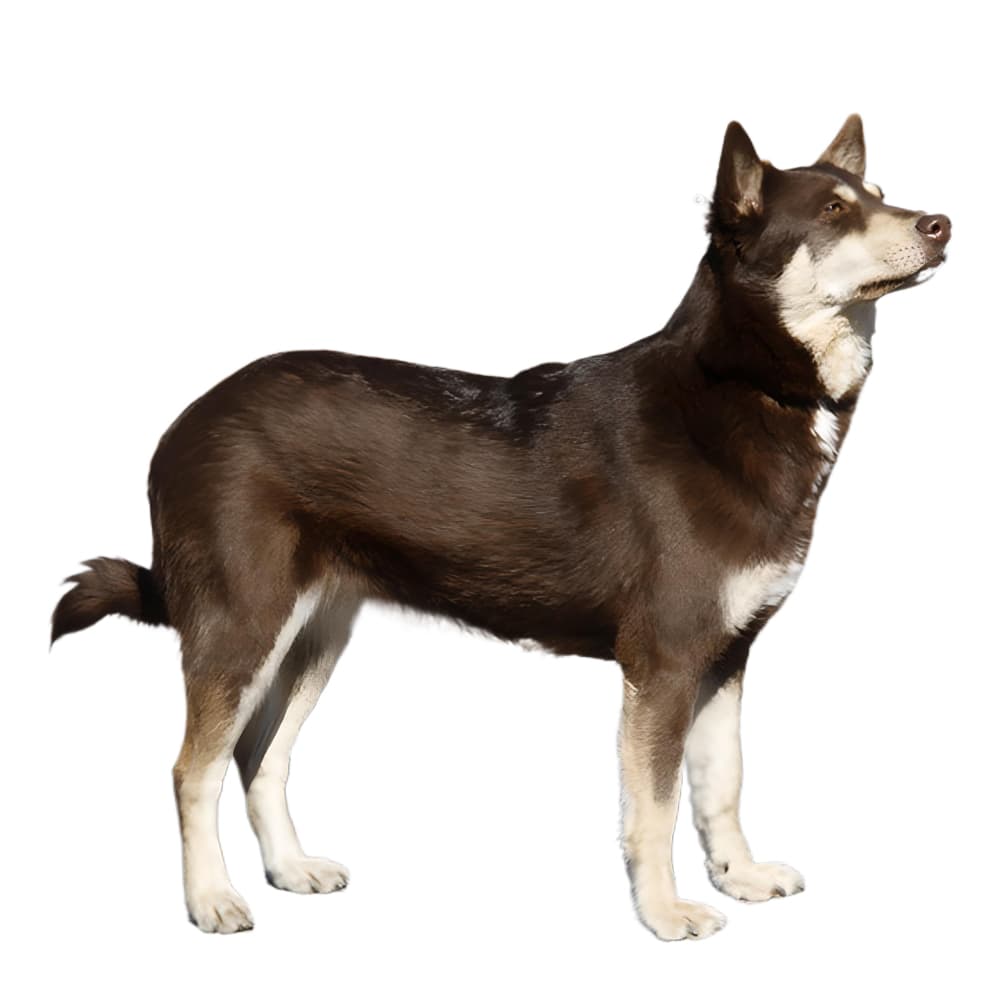Discover your dog's connection to this breed and 200+ others


Discover your dog's connection to this breed and 200+ others



The Lapponian Herder, also known as the Lapland Reindeer Dog or Lapphund, is an ancient dog breed originating from the northern regions of Sweden, Finland, and Russia. Historically, the breed has been used by the indigenous Sámi people to herd and manage reindeer herds, thus playing a crucial role in their traditional livelihood. The breed's history can be traced back several centuries, and they have been selectively bred to excel in herding tasks in harsh Arctic conditions. The Lapponian Herder has a double coat, which consists of a dense, soft undercoat and a longer, straight, and harsh topcoat. This combination provides excellent protection against the cold and harsh weather conditions in their native regions. The breed's coat is medium to long in length, with a pronounced mane around the neck and chest.
Lapponian Herders can suffer from choroidal hypoplasia (Collie eye anomaly), glycogen storage disease II, multifocal retinopathy (CMR3), and progressive retinal atrophy. As a larger dog breed, they are also at risk of developing orthopedic problems such as hip and elbow dysplasia. Genetic testing is recommended, including for the following additional conditions: hyperuricosoria, degenerative myelopathy, and progressive rod-cone degeneration.
Lapponian Herders are known for their intelligence, strong work ethic, and loyalty to their families. As herding dogs, they have an inherent desire to be busy and are excellent at managing and moving livestock. They tend to be friendly, affectionate, and gentle with their human family members, but they may exhibit reserved behavior towards strangers. Early socialization and consistent training are crucial for developing a well-rounded and well-behaved Lapponian Herder.
A canine genetic lineage is a group of individuals or entire breeds that descended from common ancestors predating modern breed formation. Often these lineages are associated with a ‘type’ of dog with a unique historical working role and associated behaviors (e.g., herding, scent hunting, etc.).
Spitz and Sled Dogs originate in the Arctic and subarctic regions which caused them the develop adaptations to cold climates. Some of these adaptations give rise to characteristics of the lineage, most notably a dense double coat that helps with insulation. The lineage of these dogs can be followed back to ancient breeds developed by Indigenous people. These ancient breeds were used as an aid for transportation, herding, guarding, and hunting. These jobs have created dogs that are independent, intelligent and have strong work ethics as well as a sturdy body that helps them to pull sleds or go on long journeys over rough terrain.
Example breeds with ancestry from this lineage include Akita, Chow Chow, and Siberian Husky.
The Lapponian Herder is one of the national breeds of Finland, where it is highly esteemed for its herding abilities.
Due to their strong herding instincts and history of working closely with humans, Lapponian Herders excel in dog sports such as obedience, agility, and herding trials.
The breed's dense and weather-resistant coat allows them to comfortably withstand extreme cold temperatures.
https://vgl.ucdavis.edu/breed/lapponian-herder?page=0 https://www.fci.be/en/nomenclature/LAPPONIAN-HERDER-284.html https://www.ukcdogs.com/lapinporokoira-lapponian-herder
https://www.akc.org/dog-breeds/lapponian-herder/
Recommended by top vets with decades of experience
21 breeds
64 genetic health markers
50 genetic trait markers
